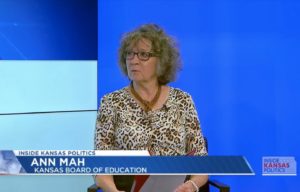Op-Ed: School is starting but kids are being left behind in Texas
(The Center Square) – It’s an exciting time as millions of students return to schools in Texas this month. The bright young minds are ready to take the next step in their unique paths for a…

(The Center Square) – It’s an exciting time as millions of students return to schools in Texas this month. The bright young minds are ready to take the next step in their unique paths for a prosperous future.
But what’s depressing is that few students in Texas will attend the best school for them. This is because Texas – the largest red state – has yet to adopt universal school choice.
Why the delay? Mostly misinformation.
School choice is “any policy that allows families to take their children’s education dollars to the approved education provider of their choosing – be it traditional public schools, public charter schools, private schools, virtual learning, or homeschooling.”
The gold standard of school choice is Education Savings Accounts (ESAs). Universal or near-universal ESAs have been adopted by eight states so far: Arkansas, Arizona, Florida, Indiana, Montana, South Carolina, Utah, and West Virginia. Other states have passed limited school choice.
With ESAs, all parents receive an allotted amount for each child that they can use however they wish for approved education-related expenditures. Some parents choose to send their child to their local public school district and use the money for school supplies. Others put it toward private school tuition, and others toward homeschool curriculum and tutoring.
The possibilities of using ESAs are extensive to best meet the unique needs of students.
But Texas trails behind in school choice because voters living in rural areas fear “that any kind of educational competition will decimate rural public schools and drain them of funds.”
This circular concern proves the point that school choice advocates have been making for years: if a school, be it public, private, or charter, fails due to the existence of ESAs, then that school lacks the competition required to keep and attract parents.
And herein lies misinformation.
A recent article from the Dallas Morning News on this subject claimed, “Did you know parents can take their children to any school they desire? If a parent wants their child to attend a charter, private or public school, the parent has the power to choose.”
If only that were true.
But when the average private school tuition in Texas is over $10,000, and the charter school waitlist is over 70,000, asserting that “parents can take their kids to any school they desire” misunderstands how unattainable alternative schooling options are for many children, especially those in lower-income or single-parent households.
I grew up in a lower-income, single mother household in South Houston, Texas, so this limitation hits home.
Fortunately, I had the opportunity to go to a small private school from kindergarten to second grade because my mother worked there. I attended a government school from third grade to sixth grade. Then my grandparents and father helped my mother fund my home schooling from seventh grade to twelfth grade. I then went on to be a first generation graduate with a doctorate in economics from Texas Tech University.
Unfortunately, too many don’t have those same opportunities that I was blessed to have. This must change.
While ESAs do not remove every barrier, as schools have limited seats and some areas may only have government schools. But they substantially widen the array of options by helping alleviate some of the financial burden by putting tax dollars where they belong: funding students instead of systems.
The states that have adopted universal school choice with ESAs are allowing a more competitive market to work in education, and it will be exciting to see how competition fuels improvements in educational outcomes. Not only are parents in these states more equipped to send their children to the best schooling options for them, but teachers are also empowered with more options for where to take their professional services that best meet their needs.
Are government schools the best option in Texas? Implement universal school choice, and the answer will become apparent. Otherwise, the Lone Star State will lag behind more forward-thinking states that value educational freedom and student achievement.
There is a high likelihood that school choice will be part of a called special session by Texas Gov. Greg Abbott (R) in October. Let’s hope so because the longer Texas waits, the further students will fall behind.



